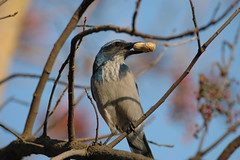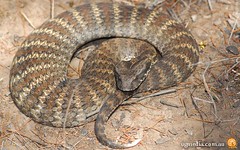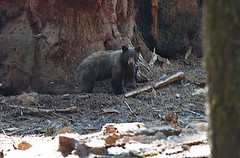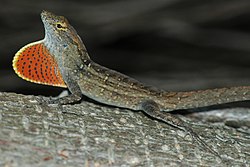![]() Rebekah Wukits discusses recent findings about ratite evolution for Bio 135.
Rebekah Wukits discusses recent findings about ratite evolution for Bio 135.
Ratite evolution has been debated for centuries. Some of the earliest evolutionary biologists questioned whether or not ratites had a linear evolution or if the major groups had had independent origins. Richard Owen proposed that living ratites had much more in common with other flight capable groups while being united by the “arrested development of wings unfitting them for flight”. In 1951, two ornithologists, Mayr and Amadon, stated that, “the present consensus is that the main groups of these birds are of independent origins”.
Traditionally, ratites have been considered to be monophyletic, or ascending from a common ancestor. They are placed in the major group Noegnathae, with the flight-capable tinamous as a sister group. Since the extinct tinamous were capable of flight, it has been thought that the ratites lost flight once in their history, then diversified. Unfortunately, simple geography contradicted this theory. All living ratites (rheas, cassowaries, emus, ostriches and kiwis) are isolated on different southern continents. Rheas are found in South America. Ostriches reside in Africa. Emus and cassowaries are found only in Australia and kiwis can be found in New Zealand. Extinct species of ratites follow the same pattern. Moas were also found in New Zealand, and elephant birds lived in Madagascar. The question became that if flight was lost once early in ratite evolution, how did they become so spread out and isolated? The perfect answer seemed to reside in the theory of continental drift. Ratites came from a single ancestor, lost flight and were then isolated when Gondwana broke up.
Though most of the recent studies of morphological and molecular ratite characteristics have supported the monophyletic theory, many still debate it. Rarely challenged is the fact that adaptations to a cursorial lifestyle, one that is adapted to running, can lead to convergent evolution, and can be misleading when basing phylogeny on morphology. This led scientists to do further phylogenomic studies in order to test the prevailing theories. These studies include data taken from genetic loci that represent the entire avian genome. In this particular study, data was taken from 20 loci that are dispersed widely throughout the avian genome. The data set included all living ratites and eight outgroup taxa. Previously done similar genetic tests have supported ratite monophyly, however these tests were more sophisticated and advanced and supported a different conclusion.
The results are as follows: analysis of the data strongly supports placing the flight capable tinamous within ratites and ostriches as the sister group. If this new phylogeny is correct, the single loss of flight in ratites is unlikely. In order for all ratites to have lost flight in a common ancestor, the tinamous would have had to regain flight at a later time. It is much more likely that flight was lost multiple times do to convergent evolution than to have gained flight in the earliest ancestors, lost flight in the common ancestor of ratites, than gain flight again in tinamous.
It seems more likely that ratites descended from a single ancestor, than diversified when gondwana broke up. Flight was lost in each family and convergent evolution occurred due to similar environmental conditions. Flight is very costly both energetically and morphologically. Ratites had little pressure to fly and since these features are costly to maintain, they became reduced over time. The theories of this paper seem concrete however more study is needed. Their own genetic studies produced conflicting results. Placing tinamous within ratites has great implications for their evolution and dispersal. This idea needs to be further developed and supported.
Reference:
J. Harshman, E. L. Braun, M. J. Braun, C. J. Huddleston, R. C. K. Bowie, J. L. Chojnowski, S. J. Hackett, K.-L. Han, R. T. Kimball, B. D. Marks, K. J. Miglia, W. S. Moore, S. Reddy, F. H. Sheldon, D. W. Steadman, S. J. Steppan, C. C. Witt, T. Yuri (2008). Phylogenomic evidence for multiple losses of flight in ratite birds Proceedings of the National Academy of Sciences, 105 (36), 13462-13467 DOI: 10.1073/pnas.0803242105




















